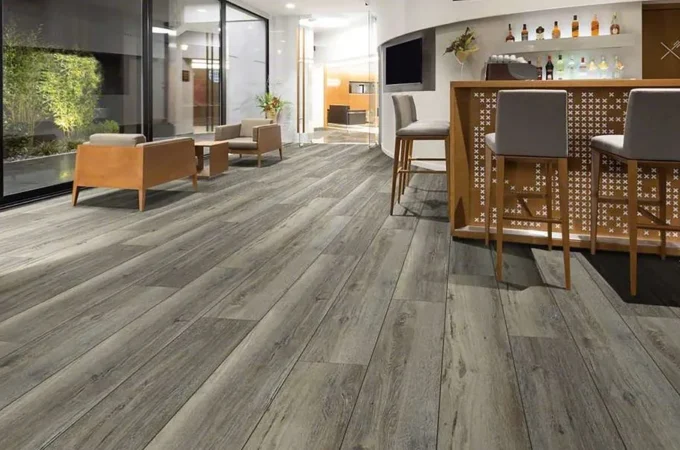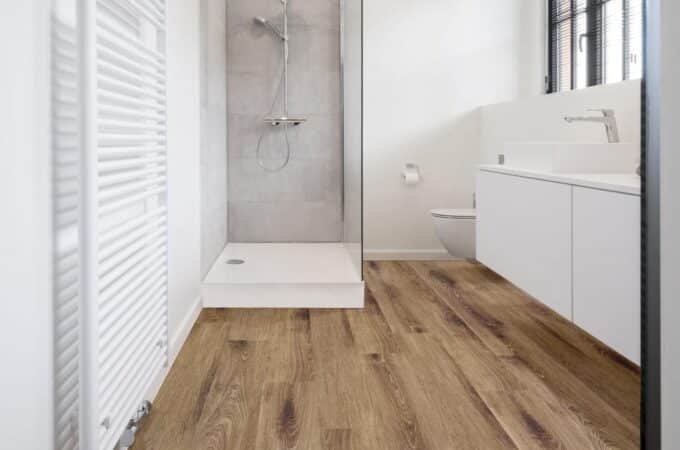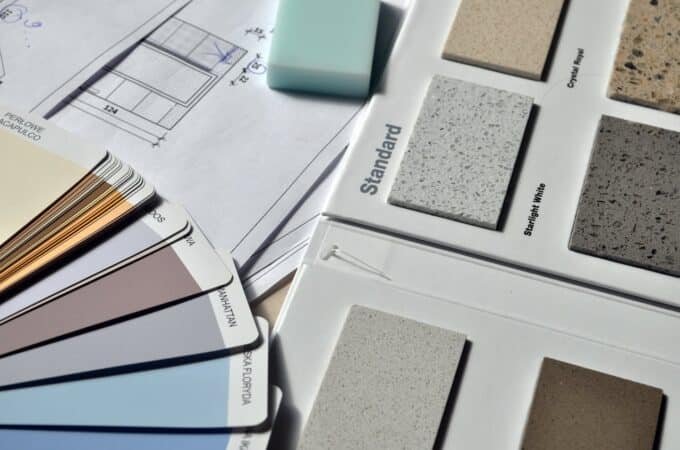
Innovative Floor Cleaning Strategies For Every Home
Table of Contents
ToggleUnderstanding Your Floors
Floors come in various shapes, colors, and materials, each with a unique cleaning routine. Understanding the type of floor is crucial to avoid shortening its lifespan with incorrect products or techniques. Matching cleaning strategies to floor type, finish, and foot traffic levels ensures lasting beauty and optimal hygiene, as older hardwoods may have lost protective finishes. When in doubt, look for guides or consult resources outlining the best hardwood floor cleaners and other surface-specific practices so you can confidently approach every task. This knowledge not only preserves your investment but also improves the health and comfort of your living environment. Consistent upkeep tailored to your specific floor type prevents the buildup of grime, allergens, and damage over time. Ultimately, the right cleaning approach saves time, reduces long-term costs, and keeps your floors looking their best for years.
Basic Floor Cleaning Methods
Good cleaning habits go a long way in keeping floors looking their best; consistency matters more than complexity. Every day, sweeping removes grit and particulates before they can be ground in by footsteps, which is especially critical for scratch-prone surfaces like hardwood and laminate. Vacuuming is another essential element, capturing smaller particles embedded within carpet fibers or hard-to-reach corners that brooms can miss. Pet owners and parents of young children benefit most from twice or even thrice-weekly vacuuming, as dirt, pet hair, and allergens accumulate quickly in active households. Mopping adds a finishing touch, removing residual dirt and bacteria that are vacuuming or sweeping and often leaving behind. Mopping with a gentle solution can restore shine while disinfecting hard surfaces like tile or vinyl. Remember to use less water on sensitive wood or laminate and always wring out excess liquid. Spot cleaning is another defense, as attending immediately to stains from dropped foods or drinks can mean the difference between a clean floor and a permanent mark.
Choosing The Right Cleaners
Standing before shelves filled with sprays, wipes, and concentrates, it’s easy to feel indecisive about what’s best for your home. The secret is in the details—different formulas work best for different floors, and not every “all-purpose” option is truly universal. Hardwood floors, for example, require cleaners that won’t strip finishes, while some vinyl floors can discolor if exposed to ammonia-based products. Porcelain, ceramic tiles, and natural stones are sensitive to acidic cleaners, which might crack or engrave the delicate surface over time. Look for pH-balanced or neutral products for maximum versatility. They’re formulated to clean tile, wood, and even particular carpets without damaging finishes or fibers. For allergy-sensitive households, unscented or hypoallergenic versions are the safest bets. If introducing a new product to your routine, always do a patch test in a hidden spot first. Your cleaning choices build up over time, so making careful, deliberate decisions leads to better results and fewer regrets down the road.
Natural Vs. Chemical Products: Weighing The Options
Consumers today have more options, including a growing market of “green” or natural cleaners. Vinegar diluted with water is a classic homemade solution for many hard surfaces, and baking soda tackles odor and mild staining. However, these may not have the same sanitizing punch as commercial solutions, especially concerning bacteria or mildew in high-moisture areas like bathrooms. On the other hand, stronger chemical products can disinfect and deep clean but may produce strong odors, leave chemical residues, and trigger skin or respiratory discomfort for sensitive users. Safer cleaning starts with reading labels, following guidelines, and using only what’s necessary. Opening windows or using fans for ventilation is smart, especially if you’re working in smaller or poorly ventilated rooms. Effective floor cleaning is achievable regardless of preference when you balance safety, environmental responsibility, and powerful results.
Cleaning By Floor Type
One-size-fits-all rarely succeeds in floor care, where each material has its preferred cleaning method. Here’s how to handle the most common surfaces:
- Hardwood: Use a quality microfiber mop that is ever-so-slightly dampened with a specialty wood cleaner. Avoid soaking the surface—excessive moisture can seep into seams and cause warping or staining. Buff with a dry cloth for extra shine.
- Title: Combine warm water with a gentle detergent, mop thoroughly, and pay special attention to grout lines, which can harbor stains and bacteria. Use a soft brush for dirty grout, avoiding harsh scrubbing pads on shiny tile to prevent scratches.
- Carpet: Vacuum regularly with a rotating brush for high-traffic areas and at least weekly elsewhere. Address spills quickly by blotting—not rubbing—using a clean, white towel and carpet-appropriate cleaner. Steam or deep clean carpets professionally every year to tackle embedded dirt, dust mites, and allergens.
- Laminate: Water is the enemy! Always use the least amount required, and never let spills or puddles remain. Specialized laminate cleaners or a solution of slightly soapy water applied with a damp (never wet) mop are best.
- Vinyl: A mild cleaner and a soft-head mop maintain shine and cleanliness but skip abrasives and harsh chemicals that strip protective layers or cause dullness over time.
Performing a small, inconspicuous test before widespread use of any new cleaning agent can prevent costly mistakes and keep your floors looking like new.
Common Floor Cleaning Mistakes To Avoid
Even diligent cleaners sometimes slip into habits that undermine their efforts. Overwetting hardwood is one of the most common errors, often leading to cupping, warping, or even mold growth under floorboards. Using steel wool or abrasive sponges on laminate or soft vinyl leaves scratches that collect more dirt and become impossible to remove without professional intervention. Overusing heavy detergents or not rinsing away chemical cleaners completely leaves a sticky residue that attracts more dirt. Incorrect vacuum attachments can also do real damage, especially to wool rugs or delicate wood. Double-check your equipment settings and always use products specifically recommended for your flooring. Taking the time to review manufacturer care guidelines or credible resources will help you avoid these missteps and keep repairs to a minimum.
Maintenance Tips For Long-Lasting Floors
Day-to-day maintenance, combined with innovative prevention, is a winning combination for floor longevity. Start by placing mats at entrances and high-traffic zones to catch dirt and grit before it’s tracked inside. A no-shoes policy is simple, effective, and widely recommended by flooring specialists. Whenever a spill happens, clean it up quickly—water, soda, wine, and coffee can leave behind stains or, worse, damage finishes if allowed to sit. Moving heavy furniture occasionally redistributes wear patterns, helping carpets and hardwoods fade or age evenly while preventing permanent dents. Velcro or felt protective pads under chair and table legs protect sensitive surfaces from scratches or pressure marks. Finally, consider using runners or area rugs in high-wear pathways to add an extra layer of protection and style at the same time.
The Impact Of Cleaning On Health And Allergies
Floors are magnets for dust, pet dander, pollen, and other microscopic irritants that affect air quality and aggravate allergy or asthma symptoms. While most people focus on tablets or air filters, medical professionals agree that regular cleaning is a critical first step in creating a healthier living environment. Vacuuming with a HEPA filter, damp dusting, and prompt spill removal reduce allergens before they become airborne threats. Maintaining cleanliness in bedrooms, living rooms, and even home offices reduces sneezing fits and respiratory flare-ups, especially in homes with children, seniors, or immunocompromised residents. If you or a family member struggles with allergies, see Mayo Clinic’s allergy advice for a comprehensive look at the best routines and tools for allergen management. Small daily steps—like a quick vacuum or mop—can add significant health benefits.
Staying Updated With Floor Cleaning Trends
As technology evolves and green solutions gain ground, homeowners have more options than ever to keep their floors spotless. Robot vacuums, programmable mops, and eco-friendly sprays are now mainstream and accessible, saving time and reducing environmental impact. Busy families find great advantage in automating routine tasks, freeing up time for what matters most. Even traditional cleaning tools are getting facelifts, with microfiber cloths, multi-surface heads, and compact steamers now available for diverse needs. Monitoring trends provides your home with the most effective, affordable, and sustainable products. Reading consumer reports, browsing trusted online resources, or consulting professional cleaning services gives fresh inspiration and avoids falling behind. Staying informed isn’t just about being on trend—it can make day-to-day living easier and healthier while ensuring your floors look beautiful for years.






